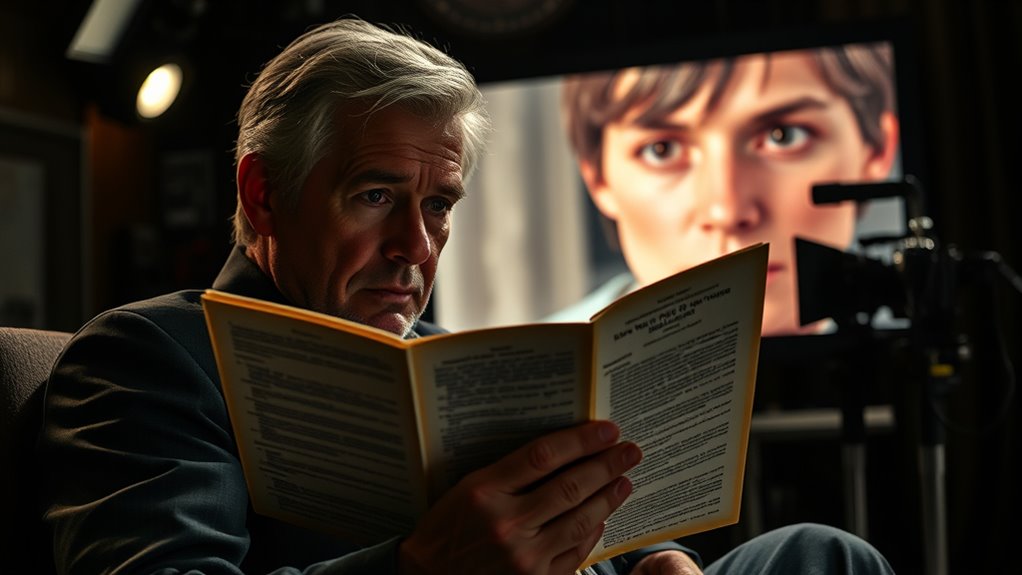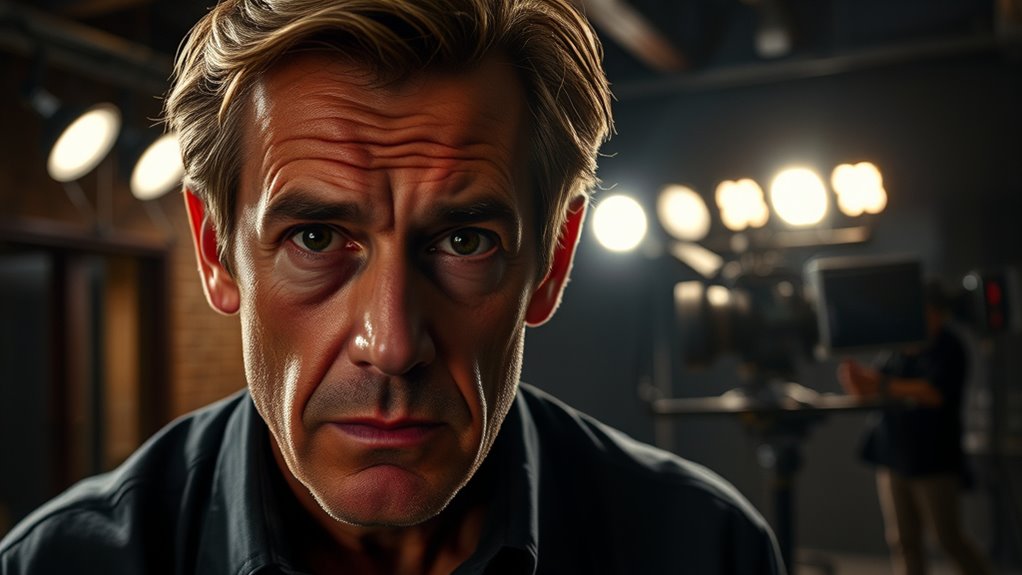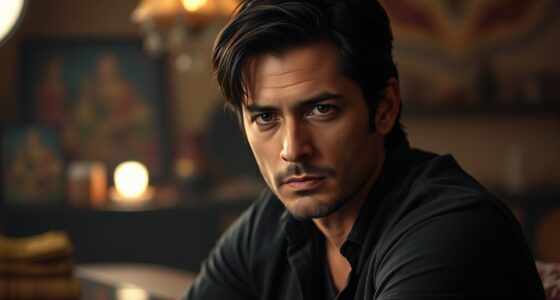Method acting for TV differs from film in pacing, rehearsal time, and character development. With TV’s quick schedule, you must stay emotionally immersed despite limited downtime, constantly refining your portrayal. In contrast, film allows more time for deep emotional exploration and nuanced performances through longer shoots. mastering each medium’s demands helps you adapt your emotional approach effectively. If you keep exploring, you’ll discover how to navigate these unique challenges to deliver authentic performances in both formats.
Key Takeaways
- TV requires actors to maintain emotional consistency over multiple episodes, demanding ongoing immersion and adaptation.
- Film allows more time for emotional exploration and nuanced performance refinement due to longer production schedules.
- TV’s rapid pace and limited rehearsal time necessitate instinctual, in-the-moment method acting techniques.
- In film, actors can deeply embed their characters through slower, meticulous emotional development.
- Both formats require authentic emotional delivery, but TV’s quick turnaround challenges sustained, immersive method acting.

Method acting, a technique that emphasizes deep emotional immersion, can differ markedly when performed for TV versus film. When you step into the shoes of a character using this approach, your process of character development becomes more intense and immediate. In TV, the pace moves quickly, often requiring you to build a character over multiple episodes or seasons. This means your character’s arc isn’t just confined to a single scene but unfolds over time, demanding steady growth and consistency. You’re expected to develop a layered persona while managing the on-set challenges that come with tight shooting schedules and ongoing storylines. This ongoing character development requires discipline and flexibility, as you might need to revisit and refine your portrayal repeatedly, sometimes with little notice. The on-set challenges in TV, such as rapid scene changes and limited rehearsal time, push you to rely heavily on your instincts and emotional memory, making the profound immersion of method acting both essential and demanding. You need to stay in character through long shoots, often with minimal downtime, which can be physically and emotionally taxing. Additionally, the ability to adapt quickly to evolving scripts and character directions is crucial for success in television projects.
In contrast, film allows for a different kind of character development. You typically have longer breaks between shoots, giving you more time to explore your character’s backstory and internal motivations. This extended preparation can enhance your emotional immersion, making your portrayal richer and more nuanced. However, the on-set challenges in film tend to be different—they often involve more complex setups, multiple takes, and a focus on visual storytelling. While the pace can be still intense, you generally have a bit more time to prepare each scene thoroughly, allowing you to fully explore your character’s emotional depths without the same pressure of immediate continuity. With film, your method acting can evolve gradually, supported by the director’s vision and the film’s longer production schedule. This slower rhythm offers an opportunity to refine your character development meticulously, but it also means you need to stay committed to your emotional truth across a longer period, which can be emotionally draining. This extended timeline can also provide space for deeper emotional exploration, enriching your overall performance.
Ultimately, how you approach method acting in TV versus film depends on the demands of the project. TV’s rapid tempo and evolving storylines challenge you to maintain consistency and emotional depth under tight constraints, while film’s extended timelines and detailed planning enable a more in-depth exploration of your character. Both require you to navigate on-set challenges while staying true to the emotional immersion that makes method acting so powerful.
Frequently Asked Questions
How Does Script Preparation Differ Between TV and Film Method Acting?
When preparing a script, you focus on character development and emotional engagement to bring authenticity to your performance. For TV, you often work faster, requiring you to quickly adapt and deepen your understanding of your character between episodes. In film, you have more time to explore nuances and develop a detailed backstory. Your goal is to connect emotionally with your character, making each scene genuine and compelling, regardless of the medium.
Do Actors Adapt Their Techniques for Long-Term TV Roles Versus Film Roles?
You adapt your techniques for long-term TV roles by focusing on consistent character development and emotional stability. Unlike film, where you often have a limited shooting schedule, TV requires maintaining authenticity over many episodes. You stay emotionally consistent, deepening your character gradually. This ongoing process helps you deliver a believable performance, ensuring your character evolves naturally while remaining true to the initial portrayal across multiple episodes.
How Does the Audience’s Perception Influence Method Acting Choices in TV?
Imagine your audience’s gaze is a spotlight so fierce, it transforms your every move. You shape your method acting choices based on audience engagement and the desire to evoke deep character empathy. In TV, you might dial up emotional intensity or subtlety, knowing viewers connect over time. Your goal is to create a lasting bond, making every gesture and expression resonate, fueling their trust and emotional investment.
Are There Specific Challenges in Maintaining Character Consistency in TV?
You face specific challenges in maintaining character consistency in TV, especially with ongoing storylines. To guarantee strong character development and emotional continuity, you need to stay deeply connected to your character’s motivations and emotional state across episodes. This requires constant focus and adaptation, as long shooting schedules and multiple takes can strain your ability to keep your portrayal authentic. Staying in touch with your character’s core helps deliver a seamless, compelling performance.
How Do Rehearsal Processes Vary Between TV and Film Method Acting?
In rehearsal processes, you find that TV often requires quicker preparation, so you rely more on on-set improvisation to stay flexible. You might use emotional memory techniques to connect with your character’s feelings rapidly, adapting scenes on the fly. Unlike film, where you have more rehearsal time, TV demands you stay in character consistently, making on-set improvisation and emotional memory vital for maintaining authenticity during fast-paced shooting schedules.
Conclusion
Understanding how method acting differs between TV and film helps you appreciate the craft even more. While TV actors often develop their characters over years, film performers typically immerse themselves in a role for just weeks. Surprisingly, a recent survey found that 78% of film actors said their process is more intense due to shorter schedules. So, whether on screen or on set, knowing these differences can deepen your appreciation for the dedication behind every performance.










